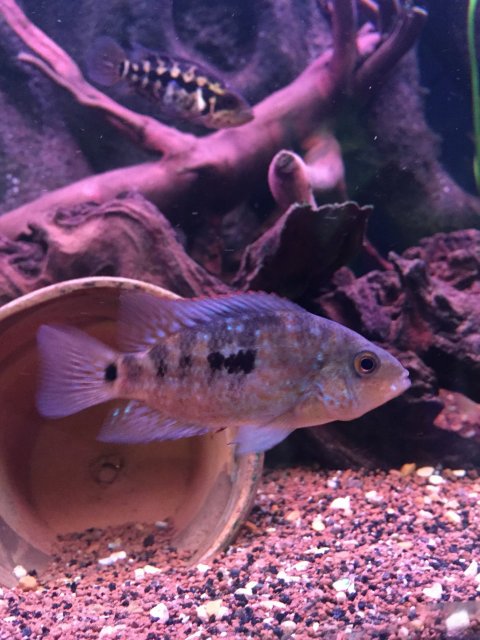Really? There is alot of red in the fins, but i've noticed that he seems to show a orange/red pearl outline aswell. He is a darker blue colour all over though. Do you think it's possible blue texas x red devil/midas/terror?Looks like a hybrid possible Red Texas hybrid.
Hard to say what the genetics are but thats a good guess any of those can play a part.Really? There is alot of red in the fins, but i've noticed that he seems to show a orange/red pearl outline aswell. He is a darker blue colour all over though. Do you think it's possible blue texas x red devil/midas/terror?
Thanks for the reply. Just through curosity what makes you think that? Any idea what cross?I think it looks like a hybrid too.
Many use Texas and blood parrot because it needs the fading gene since blood parrots get theirs from Midas. I've seen red Texas from blood parrots, Midas, Red Devils and red mammons.Thanks for the reply. Just through curosity what makes you think that? Any idea what cross?
You can clearly see the orange red hue behind the scales meaning it might be fading soon
Also looks like a female the black extends to the dorsal fin which is typical of a female. That's not always the case but a good indication
Although "Texas" seems to be a catch-all term for the genus Herichthys, in truth there is only one true Texas cichlid, and it is cyannoguttatus (the only one of the genus endemic to Texas).
I've seen carpintus, tamasopoensus, and even minckleyi erroneously thrown into the term "Texas cichlid", I suppose because they look similar and are the same genus.
Most people can't tell them apart, and expecting a serious ID from a photo is not realistic.

above is a Herichthys carpintus location Chairel
below a pair of Herichthys tamasopoensus preparing to spawn

I've seen carpintus, tamasopoensus, and even minckleyi erroneously thrown into the term "Texas cichlid", I suppose because they look similar and are the same genus.
Most people can't tell them apart, and expecting a serious ID from a photo is not realistic.

above is a Herichthys carpintus location Chairel
below a pair of Herichthys tamasopoensus preparing to spawn











